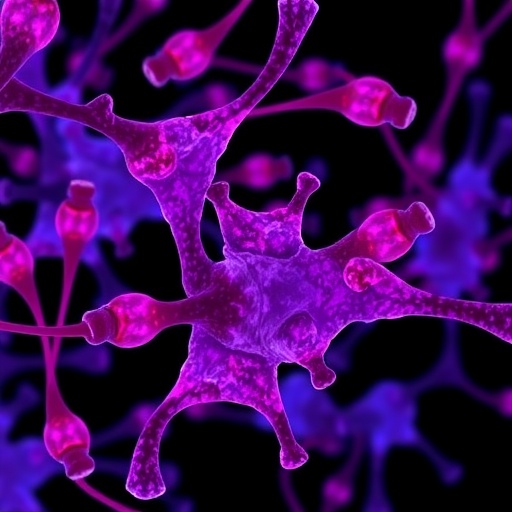In the relentless battle against blood cancers, researchers at the forefront of biomedical science continue to push the boundaries in search of novel therapeutic targets that promise greater efficacy and safety. Blood cancers, while frequently manageable in the short term through existing treatments, present a formidable challenge due to the high propensity for relapse, which often leads to devastating outcomes for patients. Among the vanguard addressing this critical medical challenge is the Josep Carreras Leukaemia Research Institute, whose dedicated team is pioneering groundbreaking research focused on the intricate world of chromatin biology, particularly the elusive histone proteins that regulate gene expression and genomic stability.
Central to this innovative research is the Chromatin, Metabolism and Cell Fate laboratory, led by Dr. Marcus Buschbeck, whose work delves deeply into the molecular choreography that governs how genetic information is stored and accessed within cells. Chromatin, the densely packed complex of DNA and proteins, acts as the transcriptional gatekeeper, and histones—its fundamental protein components—play a pivotal role in maintaining genome integrity and regulating gene function. Mutations and dysregulation of histone proteins have been increasingly recognized as drivers of oncogenic transformation, especially in hematological malignancies, positioning them as tantalizing targets for therapeutic intervention.
Historically, however, histones have been regarded as “undruggable” entities. Their ubiquitous presence and essential roles in normal cell survival imposed a near-impossible hurdle for targeted therapies, as inhibiting these proteins could inflict severe toxicity. This longstanding assumption has hindered efforts to exploit chromatin dysregulation therapeutically, leaving a critical gap in the arsenal against blood cancers. Dr. Buschbeck’s team has taken a transformative approach by concentrating on a unique subset of histones known as macroH2A variants, which differ from canonical histones through their specialized structural domains and regulatory functions.
Among the macroH2A family, three variants—macroH2A1.1, macroH2A1.2, and macroH2A2—have drawn particular attention. Earlier studies hinted at a strong association between macroH2A dysregulation and the pathogenesis of Acute Myeloid Leukaemia. This nexus galvanized the research efforts to rigorously test the therapeutic potential of targeting these histone variants. The breakthrough came through a series of meticulous in vivo experiments, wherein each macroH2A variant was selectively ablated in murine models to assess the physiological ramifications and ascertain safety profiles.
The findings, published in a high-impact scientific journal, provided remarkable insights that defied expectations. Contrary to concerns about significant toxicity, the loss of macroH2A variants did not precipitate catastrophic adverse effects in normal mice. While most physiological parameters remained intact, the removal of macroH2A1.1 induced a subtle but notable kidney abnormality. This renal phenotype correlated with a metabolic shift—from lipid to glucose utilization—that, although intriguing, presented a manageable condition. Intriguingly, researchers demonstrated that dietary modulation could restore metabolic balance and reverse kidney lesions, thereby underscoring the feasibility of therapeutic targeting.
This revelation fundamentally redefines the therapeutic landscape, suggesting that macroH2A histones hold promise as safe and effective drug targets in blood cancers. By unmasking the nuanced biological roles of these variants, the study offers a new vantage point that reconciles chromatin biology with systemic metabolism—a nexus that could be exploited to achieve selective anticancer effects while sparing normal tissues. Consequently, this work has catalyzed a vibrant new line of investigation within the Josep Carreras Institute and among its global collaborators, with multiple research groups now exploring small molecules and other modalities aimed at modulating macroH2A function.
Beyond the biochemical and cellular intricacies, the team leveraged state-of-the-art platforms including the German Mouse Clinic and Helmholtz Center Munich’s expertise, utilizing comprehensive phenotyping pipelines that evaluate hundreds of physiological parameters. This extensive phenotyping lends robustness to the conclusions and paves the way for translational studies that could expedite clinical development. The interdisciplinarity embodied in this collaboration epitomizes the modern research paradigm, where genomics, metabolism, and physiology converge to unlock therapeutic breakthroughs.
In addressing the unmet needs in haematological oncology, this research integrates seamlessly with the Josep Carreras Institute’s strategic mission, which is dedicated not only to expanding fundamental knowledge but to translating discoveries into clinical advances. Through innovations such as the Computational Diagnostics Centre—which employs artificial intelligence fused with biological data—the Institute is redefining precision medicine for blood cancers, aiming to deliver targeted and personalized therapies that improve survival and quality of life for patients worldwide.
This promising avenue reflects a paradigm shift: histone variants, once sidelined due to presumed toxicity, are now emerging as druggable chromatin regulators with the potential to disrupt oncogenic pathways uniquely operative in leukaemia cells. The catalytic impact of such research resonates beyond leukaemia, hinting at relevance to a spectrum of haematologic malignancies and perhaps solid tumors, where epigenetic dysregulation is equally implicated.
Funding for this transformative study has been supported by prominent international scientific bodies, including the European Commission, the German Research Foundation, and a consortium of philanthropic foundations. Such cooperative investment underscores the global priority accorded to decoding cancer biology and enabling innovative treatment paradigms. Publishing in a prestigious platform ensures wide dissemination, inspiring parallel investigations and accelerating the innovation cycle from bench to bedside.
As the pursuit to conquer blood cancers advances, the identification of macroH2A histone variants as safe, viable drug targets represents a beacon of hope in the complex and nuanced landscape of cancer biology. It heralds a future where chromatin-targeted therapies can join the therapeutic armamentarium, providing new strategies against relapse and resistance that have long beleaguered clinicians and patients alike. This research exemplifies how deep mechanistic exploration coupled with rigorous in vivo validation can transform once theoretical targets into tangible pathways toward cures.
Subject of Research: Animals
Article Title: Loss of histone macroH2A1.1 causes kidney abnormalities secondary to a change in nutrient metabolization
News Publication Date: 24-Oct-2025
Web References:
http://dx.doi.org/10.1126/sciadv.adz1242
References:
René Winkler et al. “Loss of histone macroH2A1.1 causes kidney abnormalities secondary to a change in nutrient metabolization”. Sci. Adv., Vol 11, Issue 43.
Image Credits:
Josep Carreras Leukaemia Research Institute
Keywords:
Histones, Chromatin, Myeloid leukemia, Cancer, Leukemia




